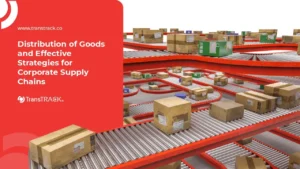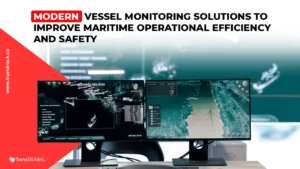IoT’s Role in Advancing Fleet Management Technology
Posted on September 30, 2024 by Nur Wachda Mihmidati

The Internet of Things (IoT) plays an important role in fleet management by providing real-time data on the location and status of vehicles. This allows fleet managers to respond more quickly to problems or emergencies, thereby improving safety and operational efficiency. In addition, IoT helps optimize routes and schedules, which can reduce fuel costs and emissions. As vehicles become more connected, the benefits of IoT in fleet management will continue to grow.
According to a Verified Market Research report, the IoT Fleet Management market was valued at USD 4.51 billion in 2018 and is projected to reach USD 19.94 billion by 2026, with an annual growth of 20.4% from 2019 to 2026. IoT is changing the landscape of fleet management technology by connecting vehicles and capturing comprehensive data on routes, vehicle performance, cargo, drivers, and passengers. The automotive industry is currently undergoing a major transformation, with technologies such as cybersecurity, electrification, and Vehicle-to-Everything (V2X) increasingly becoming key trends.

Role of Machine Learning and Automation in IoT Fleet Management Market Growth
The connected mine fleet management market is growing rapidly due to the integration of the Internet of Things (IoT) with advanced technologies such as automation and machine learning. These technologies enable real-time data collection and transmission through IoT devices and sensors, significantly improving the performance and condition monitoring of mining equipment.
By utilizing these capabilities, mine operations can achieve higher output with fewer resources while maintaining safer working conditions. Automation and machine learning provide major benefits in fleet management and mine planning by way of optimization through predictive maintenance, efficient resource allocation, and improved decision-making processes.
The growth of the connected mine fleet management market reflects the transformational potential of these technologies in streamlining operations, reducing costs, and improving safety. These technologies are driving the mining industry towards more sustainable, efficient, and intelligent practices, making connected fleet management an essential component of modern mining operations.
Challenges in IoT Fleet Management Market Growth
One of the major challenges in the connected mine fleet management market is the high cost of implementation and maintenance of advanced technologies such as IoT. Installation as well as ongoing maintenance of these systems can be very expensive, especially for smaller mining companies with limited budgets. In addition, the cost of training staff to operate and maintain these complex systems adds to the financial burden.
The lack of uniform standards across the industry exacerbates this problem. With various fleet management systems available, the integration of different technologies within existing operations is often complex and costly. This fragmentation hinders seamless interoperability and requires additional investment in customized solutions and integration efforts.
As a result, the high costs associated with implementation, maintenance, and staff training, coupled with the challenges of non-uniform standards, may hinder a wider adoption rate in the IoT Fleet Management market.
Role of Tracking and Monitoring in Driving IoT Fleet Management Market Growth
Tracking and monitoring is one of the key role in IoT fleet management that is instrumental in improving operational efficiency and fleet safety. With this capability, fleet managers can monitor the location, status, and performance of vehicles in real-time, which is critical for optimizing routes, increasing productivity, and maintaining regulatory compliance.
This real-time capability not only enables more precise fleet management, but also facilitates quick response to emergencies or deviations from the itinerary. In addition, tracking and monitoring plays an important role in cost reduction by identifying inefficient practices, reducing fuel consumption through optimized routes, and improving vehicle utilization.
As IoT technology advances, the integration of tracking and monitoring functions with data analytics and predictive maintenance further improves fleet performance and operational effectiveness, making it a key element in modern fleet management strategies.
Why Commercial Vehicles Dominate IoT Fleet Management Market Growth?
Commercial vehicles play a dominant role in the IoT fleet management market compared to passenger vehicles, primarily due to their critical role in transporting goods and passengers across various industry sectors such as logistics, transportation, and public services. Trucks, buses, and vans play a crucial role in supporting the operations of these industries.
Commercial vehicles often travel long distances on a regular basis with heavy loads, requiring robust fleet management solutions to optimize routes, monitor vehicle health, and ensure on-time deliveries. The need to comply with stringent regulatory standards related to safety, emissions, and operational efficiency is further driving the adoption of advanced technologies such as IoT for real-time monitoring and data-driven decision making.
The emphasis on operational efficiency, compliance, and reliability makes commercial vehicles a key focus in fleet management. Optimizing the performance of commercial vehicle fleets has a direct impact on business productivity and profitability, making them a key growth driver in the IoT fleet management market.
TransTRACK’s IoT Technology and Features in Fleet Management Operations
TransTRACK uses IoT (Internet of Things) technology to deliver advanced fleet management solutions, helping businesses improve operational efficiency and safety. By leveraging integrated IoT devices and sensors, TransTRACK offers several leading features that support real-time fleet operations.
Real-time Tracking and Monitoring
One of TransTRACK’s key features is its ability to track and monitor fleets in real-time. Through GPS and IoT sensors, fleet managers can see vehicle location, operational status, and performance. This allows for route optimization, increased productivity, and quick response to emergency situations.
Driver Monitoring System (DMS)
TransTRACK is also equipped with a Driver Monitoring System that uses sensors and cameras to monitor driver behavior. The system detects activities such as fatigue, cell phone use, or speeding violations, helping to reduce the risk of accidents and improve road safety.
Predictive Maintenance
The IoT technology used by TransTRACK enables the implementation of predictive maintenance, which is predictive maintenance based on sensor data that monitors vehicle conditions. This helps prevent downtime by notifying fleet managers when vehicles need maintenance before damage occurs.
Fuel Management
TransTRACK’s fuel management feature leverages IoT data to accurately monitor fuel consumption. With in-depth analysis, the system can identify inefficient driver behavior or routes, helping companies reduce fuel costs and carbon emissions.
Geofencing dan Alert System
TransTRACK also comes with a geofencing feature, which allows the management of safe zones where vehicles are allowed to operate. If a vehicle leaves the designated zone, the system will immediately alert the fleet manager, providing a better level of control over the asset. The IoT technology used by TransTRACK not only provides full visibility into fleet operations but also drives higher efficiency, lower costs, and significantly improves safety. This solution is key for companies in facing modern operational challenges in the fleet management industry.
Recent Post
Topic :
Recommended Articles

 Bahasa Indonesia
Bahasa Indonesia








